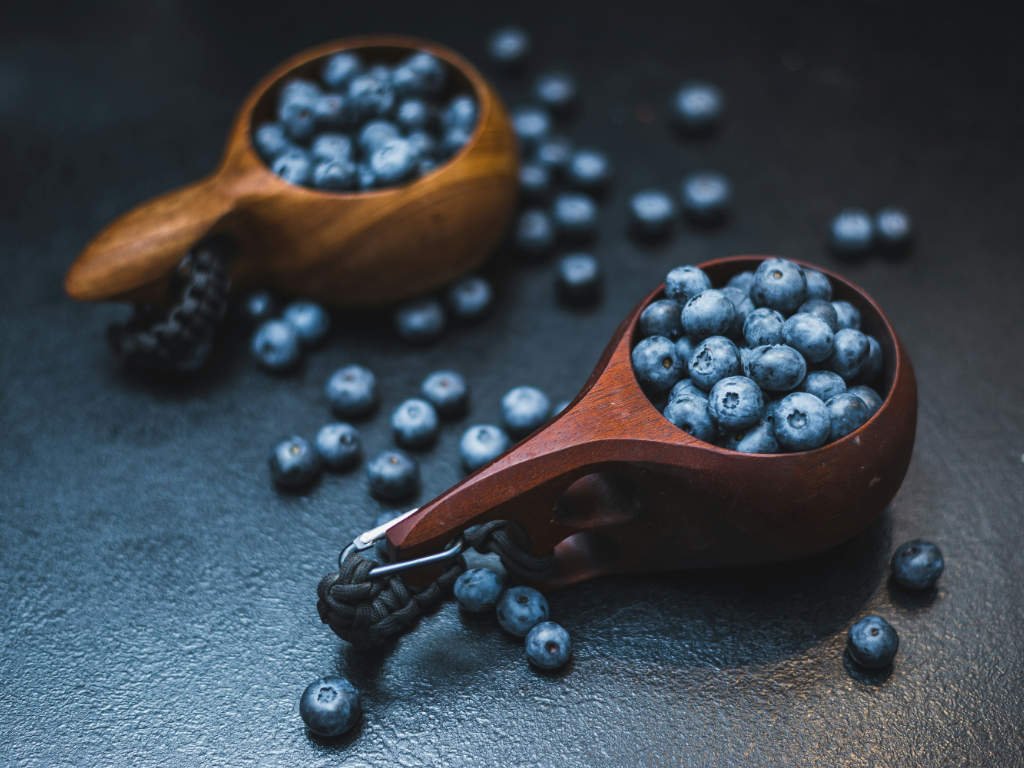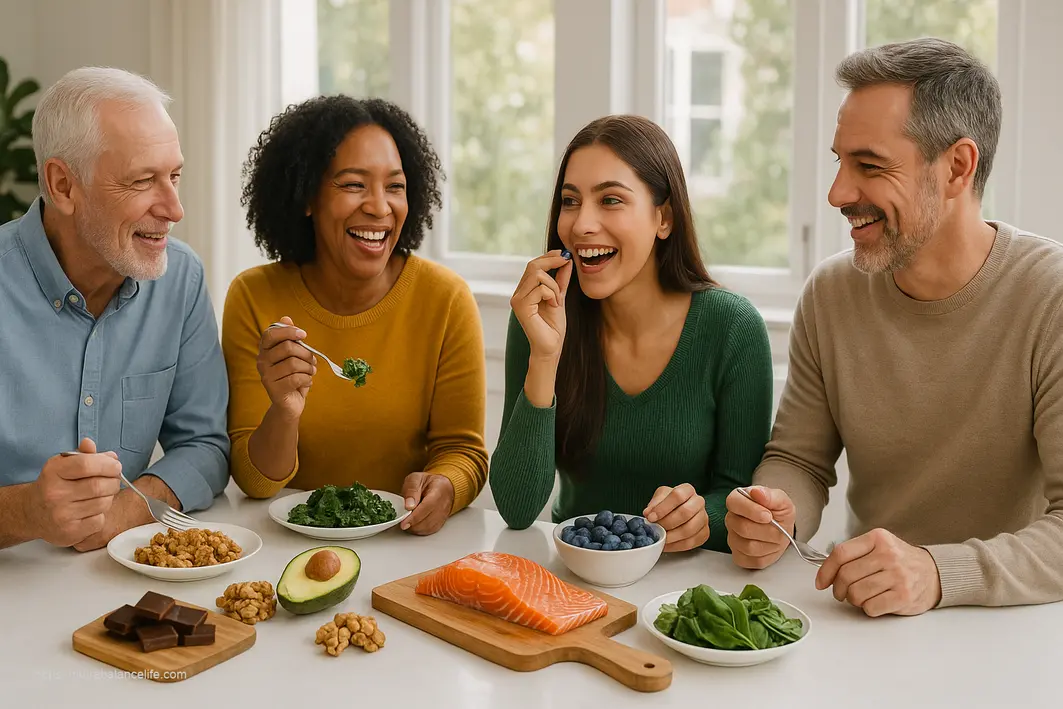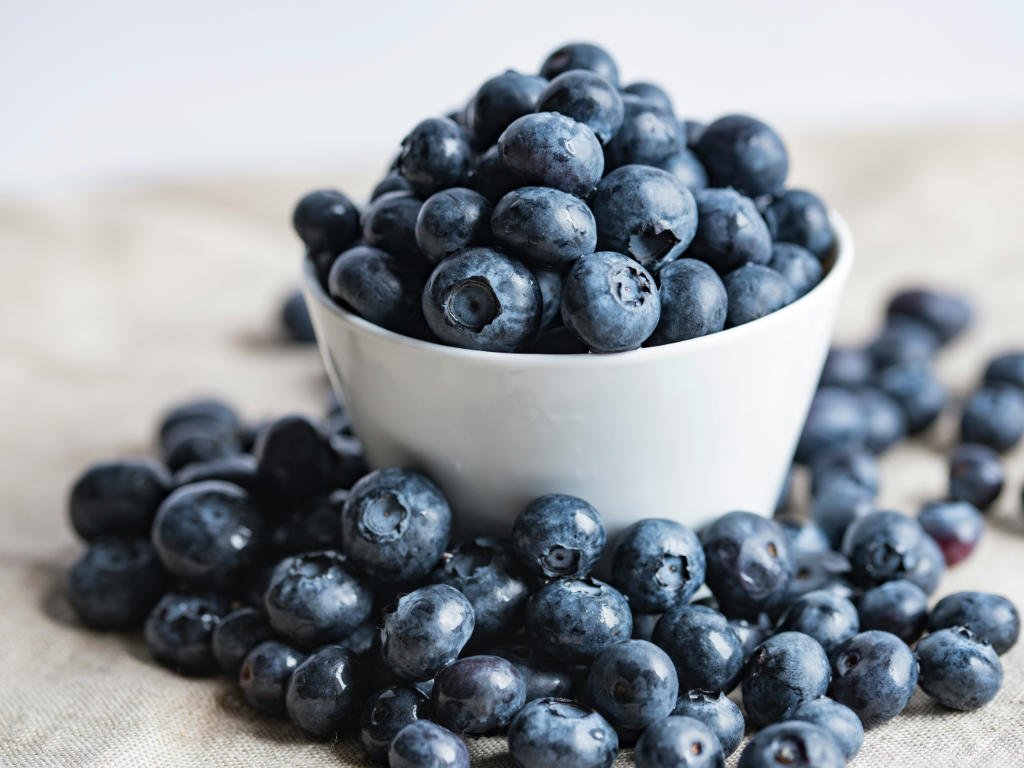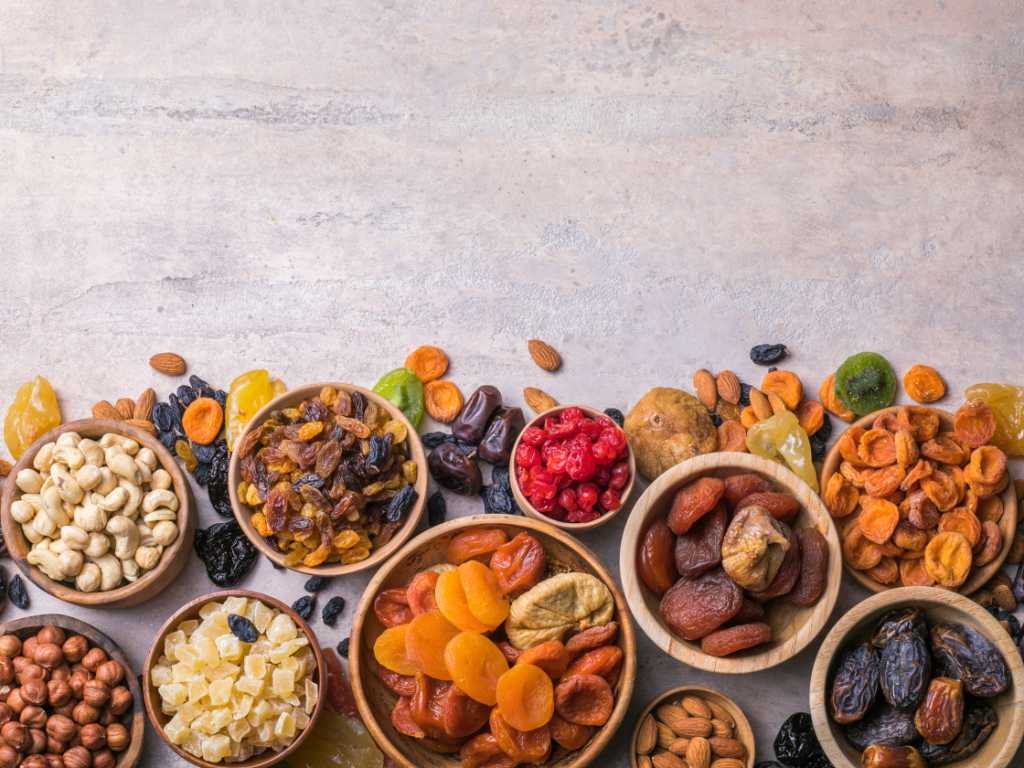At NutraBalanceLife, we delve into the science and art of nutrition to help you achieve optimal health. Our “Nutrition” section offers evidence-based insights into dietary choices, superfoods, and personalized meal plans. Whether you’re aiming to boost energy, manage weight, or enhance overall well-being, our resources guide you towards nourishing your body effectively.
Have you ever wondered why some people seem to glow with vitality while others struggle with fatigue and dull skin? The secret might be hiding in plain sight on your dinner plate. Antioxidant-rich foods are nature’s powerful weapons against cellular damage, and they could be the game-changer your health routine needs.
Every day, our bodies wage an invisible war against harmful molecules called free radicals. These microscopic troublemakers don’t just make us look older – they’re linked to serious health issues like heart disease, cancer, and diabetes. But here’s the good news: you can fight back with every bite you take.
What Are Free Radicals and Why Should You Care?
Think of free radicals as cellular bullies roaming around your body, looking for trouble. These unstable molecules are produced naturally through normal bodily processes like breathing and digestion, but they also come from external sources like pollution, cigarette smoke, and UV radiation.
Here’s where it gets interesting – while your body needs some free radicals for certain functions (like fighting off infections), too many create what scientists call oxidative stress. This imbalance is like having too many troublemakers in your neighborhood; eventually, they start damaging the good stuff.
When free radicals outnumber your body’s natural defenses, they begin attacking healthy cells, proteins, and even your DNA. This cellular damage accumulates over time, contributing to premature aging, wrinkles, weakened immunity, and increased disease risk. It’s like rust spreading through your body at a microscopic level.
The Antioxidant Defense System: Your Body’s Superhero Squad
Enter antioxidants – your body’s natural defense team. These powerful compounds work by neutralizing free radicals before they can cause cellular mayhem. They’re essentially the peacekeepers of your biological neighborhood, maintaining order and protecting your cells from harm.
Antioxidants function by donating electrons to unstable free radicals, making them stable and harmless. This process happens millions of times throughout your body every day, but your natural antioxidant production decreases as you age. That’s why getting them from food becomes increasingly important.
The benefits of adequate antioxidant intake extend far beyond just preventing disease. Regular consumption of antioxidant-rich foods supports radiant skin health, boosts immune function, enhances energy levels, and may even promote longevity. Some research suggests that people who consume more antioxidants have lower rates of chronic diseases and age more gracefully.
Top 7 Nutrient Powerhouses: The Ultimate Antioxidant All-Stars
Let’s dive into the heavy hitters – seven incredible foods that pack the most antioxidant punch for your health investment.
Blueberries: The Tiny Titans

Don’t let their size fool you. Blueberries are absolute antioxidant powerhouses, containing some of the highest levels of these protective compounds found in any food. They’re particularly rich in anthocyanins, the compounds responsible for their deep blue color and many health benefits.
A single cup of blueberries delivers more antioxidants than most people consume in an entire day. These little gems support brain health, improve memory, and may help protect against age-related cognitive decline. Plus, they’re delicious enough that getting your daily dose feels more like dessert than medicine.
Research shows that regular blueberry consumption can improve skin health by protecting collagen from free radical damage. They also support cardiovascular health and may help reduce inflammation throughout the body.
Dark Chocolate: The Guilt-Free Indulgence
Here’s permission to feel good about that chocolate craving. High-quality dark chocolate (70% cocoa or higher) contains powerful antioxidants called flavonoids, particularly epicatechin and catechin.
The key is choosing dark chocolate over milk chocolate – the higher the cocoa content, the more antioxidants you’re getting. These compounds support heart health, may improve blood flow, and could even enhance brain function. Some studies suggest that regular dark chocolate consumption might help lower blood pressure and reduce the risk of heart disease.
But moderation is key here. A small square or two daily provides benefits without excess calories or sugar. Think of it as medicine that happens to taste amazing.
Spinach: The Versatile Vitamin Vault
Popeye was onto something with his spinach obsession. This leafy green is loaded with multiple types of antioxidants, including vitamin C, beta-carotene, lutein, and zeaxanthin. It’s like getting a multi-vitamin in vegetable form.
What makes spinach particularly special is its versatility. You can sneak it into smoothies without affecting taste, add it to omelets, toss it in salads, or sauté it as a side dish. The mild flavor makes it an easy addition to almost any meal.
The antioxidants in spinach are particularly beneficial for eye health, protecting against macular degeneration and cataracts. They also support skin health and may help maintain cognitive function as we age.
Nuts: The Perfect Portable Protection
Nuts like walnuts, pecans, and almonds are antioxidant goldmines wrapped in convenient, portable packages. They’re rich in vitamin E, selenium, and other protective compounds that support overall health.
Walnuts deserve special mention for their high omega-3 content combined with antioxidants – a powerful combination for brain and heart health. Pecans actually rank among the highest antioxidant nuts, while almonds provide substantial vitamin E.
A small handful (about 1 ounce) daily provides significant antioxidant benefits along with healthy fats and protein. They’re perfect for snacking, adding to yogurt, or incorporating into meals for extra crunch and nutrition.
Green Tea: The Ancient Antioxidant Elixir
Green tea has been celebrated for centuries in Asian cultures, and modern science confirms why. It’s packed with polyphenols, particularly a powerful antioxidant called epigallocatechin gallate (EGCG).
Unlike black tea, green tea is minimally processed, preserving more of its natural antioxidants. Regular consumption has been linked to reduced cancer risk, improved brain function, and enhanced fat burning during exercise.
The ritual of drinking green tea can also provide mental health benefits through relaxation and mindfulness. Aim for 2-3 cups daily, and consider replacing sugary beverages with this antioxidant-rich alternative.
Beets: The Colorful Circulation Boosters
Those vibrant red and purple hues in beets signal high levels of betalains, unique antioxidants with powerful anti-inflammatory properties. Beets also contain nitrates, which convert to nitric oxide in the body, supporting healthy blood flow and exercise performance.
Fresh beets can be roasted, grated raw into salads, or blended into smoothies. Even pickled beets retain many of their antioxidant properties. The earthiness might take some getting used to, but the health benefits make it worth acquiring the taste.
Studies suggest that beet consumption may help lower blood pressure, improve athletic performance, and support liver detoxification processes.

Artichokes: The Surprising Antioxiant Champions
Artichokes might seem intimidating, but they’re actually one of the highest antioxidant vegetables you can eat. They contain cynarin, compounds that support liver health and provide powerful cellular protection.
Globe artichokes are the most common variety, and while they require some prep work, the payoff is substantial. The heart is the most tender part, but the leaves also contain antioxidants. You can also find artichoke hearts in jars for convenience.
These unique vegetables support digestive health, may help lower cholesterol, and provide substantial fiber along with their antioxidant benefits.
Smart Strategies for Maximizing Your Antioxidant Intake
Getting more antioxidant-rich foods into your diet doesn’t require a complete lifestyle overhaul. Small, consistent changes often yield the biggest long-term results.
Start your day by adding a handful of blueberries to yogurt or oatmeal. The natural sweetness enhances flavor while providing morning antioxidant protection. If fresh berries are too expensive, frozen ones work just as well and are often more economical.
For chocolate lovers, replace milk chocolate with a small square of dark chocolate as an afternoon treat. Keep it portion-controlled – the goal is consistent intake, not overindulgence.
Spinach blends seamlessly into fruit smoothies without affecting taste significantly. Start with small amounts and gradually increase as your palate adapts. You can also add it to scrambled eggs, pasta dishes, or sandwiches.
Keep a variety of nuts handy for snacking. Mix different types to get a broader spectrum of antioxidants and prevent boredom. Pre-portion them into small containers to avoid overeating.
Replace one daily beverage with green tea. If you’re sensitive to caffeine, opt for decaffeinated versions or drink it earlier in the day. Experiment with different varieties to find ones you enjoy.
For a comprehensive approach to nutrition, consider exploring our ultimate balanced diet guidelines to learn how antioxidant-rich foods fit into overall healthy eating patterns.
The Science Behind Antioxidant Absorption
Understanding how your body processes antioxidants can help you make smarter food choices. Some antioxidants are water-soluble (like vitamin C), while others are fat-soluble (like vitamin E). This means eating a variety of foods ensures you’re getting different types of antioxidants.
Cooking methods can affect antioxidant levels. While some antioxidants are destroyed by heat, others become more bioavailable. For example, cooking tomatoes increases lycopene availability, while raw spinach provides different benefits than cooked.
Pairing certain foods can enhance antioxidant absorption. For instance, the vitamin C in citrus fruits can help your body absorb antioxidants from green tea more effectively. This synergistic effect is one reason why eating a varied diet is more beneficial than relying on supplements alone.
Common Myths About Antioxidants Debunked
Myth: More is always better
While antioxidants are beneficial, extremely high doses from supplements can actually be harmful. Food sources provide balanced amounts along with other beneficial compounds.
Myth: All antioxidants are the same
Different antioxidants work in different ways and protect different parts of your body. Variety is key to comprehensive protection.
Myth: Supplements are equivalent to food sources
Whole foods provide antioxidants along with fiber, other nutrients, and beneficial compounds that work together synergistically.
For those interested in natural supplementation approaches, our guide to powerful natural supplements that work provides evidence-based information about when supplements might be beneficial.
Antioxidants and Skin Health: The Beauty Connection
Your skin is your body’s largest organ and first line of defense against environmental damage. Antioxidants play a crucial role in maintaining skin health by protecting against UV damage, pollution, and other environmental stressors.
Vitamin C from sources like citrus fruits and berries is essential for collagen production, keeping skin firm and youthful. Vitamin E from nuts and seeds protects cell membranes, while beta-carotene from colorful vegetables provides natural sun protection.
The compounds in green tea have been shown to protect against UV-induced skin damage and may help prevent premature aging. Regular consumption of antioxidant-rich foods often results in clearer, more radiant skin over time.
If you’re interested in comprehensive skin health, our article on collagen supplements and skin transformation provides additional insights into supporting skin health from within.

Frequently Asked Questions About Antioxidant-Rich Foods
What time of day is best to consume antioxidants?
Your body can benefit from antioxidants throughout the day, but spreading intake across meals maximizes absorption and provides consistent protection. Having antioxidant-rich foods with each meal ensures steady levels in your bloodstream.
Can I get enough antioxidants from food alone?
For most people, a varied diet rich in fruits, vegetables, nuts, and other whole foods provides adequate antioxidants. Supplements may be beneficial for specific health conditions, but food sources are generally preferred for optimal absorption and safety.
Do frozen fruits and vegetables have fewer antioxidants?
Frozen produce is often flash-frozen at peak ripeness, preserving most antioxidants. In some cases, frozen options may have higher antioxidant levels than fresh produce that’s traveled long distances or been stored for extended periods.
How quickly will I notice benefits from eating more antioxidant-rich foods?
Some benefits like improved energy and skin appearance may be noticed within a few weeks, while protective effects against chronic diseases develop over months and years of consistent consumption.
Are organic foods higher in antioxidants?
Some studies suggest organic produce may have slightly higher antioxidant levels, but the difference isn’t dramatic. The most important factor is eating a variety of fruits and vegetables, regardless of whether they’re organic or conventional.
Building Long-Term Success with Antioxidant-Rich Eating
Creating sustainable habits around antioxidant-rich foods requires realistic planning and gradual implementation. Start by identifying which of these seven powerhouse foods appeal to you most, then find simple ways to include them regularly.
Meal prep can be your ally here. Wash and portion berries for easy snacking, pre-make green tea ice cubes for quick cold beverages, or roast a batch of beets to add to salads throughout the week.
Consider seasonal eating to maximize both nutrition and budget. Berries are most affordable in summer, while heartier vegetables like artichokes and beets are perfect for fall and winter meals. This approach keeps your diet varied and interesting.
For those managing weight while optimizing nutrition, our comprehensive guide to sustainable weight loss secrets shows how antioxidant-rich foods can support healthy weight management goals.
The Mediterranean Connection
The Mediterranean diet, renowned for its health benefits, is naturally rich in antioxidants through its emphasis on olive oil, nuts, fish, fruits, and vegetables. This eating pattern has been extensively studied and linked to reduced rates of heart disease, cancer, and cognitive decline.
You don’t need to completely overhaul your diet to benefit from Mediterranean principles. Simply increasing your intake of the antioxidant-rich foods discussed here moves you toward this proven healthy eating pattern.
Our detailed guide to Mediterranean diet secrets for weight loss and longevity provides specific strategies for incorporating these principles into modern life.
Practical Meal Planning with Antioxidant Powerhouses
Creating meals that feature these seven antioxidant superstars doesn’t have to be complicated. Here are some simple combinations that maximize both nutrition and flavor:
Breakfast: Greek yogurt topped with blueberries and chopped walnuts, served with green tea
Lunch: Spinach salad with roasted beets, artichoke hearts, and a small piece of dark chocolate for dessert
Snack: Mixed nuts with green tea
Dinner: Any balanced meal followed by a small serving of berries
The key is consistency rather than perfection. Even small daily doses of these foods provide cumulative benefits over time.
For comprehensive meal planning guidance, explore our resource on ultimate balanced diet guidelines which includes practical tips for incorporating antioxidant-rich foods into sustainable eating patterns.
Investing in antioxidant-rich foods is one of the smartest decisions you can make for your long-term health and vitality. These seven powerhouse foods – blueberries, dark chocolate, spinach, nuts, green tea, beets, and artichokes – provide your body with the tools it needs to fight cellular damage and support optimal function.
Remember, you don’t need to consume all of these foods daily or in large quantities. Small, consistent amounts provide substantial benefits when maintained over time. The goal is progress, not perfection.
Your body is constantly working to protect and repair itself, but it needs the right raw materials to do its job effectively. By choosing foods rich in antioxidants, you’re giving your cellular defense system the support it needs to keep you healthy, energetic, and glowing from the inside out.
Start small, stay consistent, and let these nutrient powerhouses work their magic. Your future self will thank you for every antioxidant-rich choice you make today.
What’s your favorite way to incorporate these antioxidant champions into your daily routine? Share your creative recipes and tips in the comments below – let’s build a community committed to thriving through nutrition!


























